HV and MV Shunt Capacitor Bank
HV and MV Shunt Capacitor Bank
Shunt capacitor Banks are primarily used to improve the power factor in the network. They will also improve the voltage stability and reduce network losses. Improving the power factor also means a higher power transmission capability and increased control of the power flow. The installation of capacitors in a transmission or distribution network is called power factor correction or reactive power compensation.
-
Benefits
- Reduction of network losses
- Reduction of kVA demand
- Improving of voltage profile
- Increasing of revenue or decreasing customer energy consumption
Thanks to our long experience in designing, delivery and installation of HV and MV capacitor banks and harmonic Filter, we have established reputation as a leader on this field in the Iranian market and neighboring region.
1.1 Open Rack up to 420KV
Shunt Capacitor Bank
Shunt Capacitor Bank
- Introduction
Shunt capacitor Banks are primarily used to improve the power factor in the network. They will also improve the voltage stability and reduce network losses. Improving the power factor also means a higher power transmission capability and increased control of the power flow. The installation of capacitors in a transmission or distribution network is called power factor correction or reactive power compensation.
- Benefits
- Reduced network losses
- Reduce kVA demand
- Improved voltage profile
- Increase revenue or decrease customer energy consumption
All of these advantages can be evaluated on a financial basis. Generally, it can be stated that unless a distributed system has already been covered with switched capacitor banks on the feeders, adding switched feeder capacitors produces the fastest pay-back of any equipment investment.
Shunt capacitor bank (SCB) is an inexpensive way to improve power quality. It plays such an important role in power grids nowadays that an efficient power transmission and distribution cannot be imagined without SCBs. SCBs are found in MV distribution network and HV transmission one.
1. Los Reduction
The real energy due to untility line and tranformer resistance is caused by the customers’ load, but this energy is not registered by customers’ meters. There are two two component to this loss; that caused by the resistive component of the load, which cannot be avoided, and that caused by the reactive component of the load, which can be avoided. Switched SCB can be used to dramatically reduce the avoidable losses.
 |
 |
 |
2. Demand Reduction
The reduce in reactive current caused by a SCB also reduce the total line current. This reduction in kVA demand during heavy load periods has a number of benefits:
2.1. The peak allowable loading is increased when it is most needed (that is the same as saying there is released demand).
2.2. The effective ampacity of the lines is increased.
2.3. The operating temperatures of the lines and transformers are reduced, increasing equipment life.
2.4. The necessary to upgrade lines and transformers may be delayed.
 |
3. Voltage Profile
The demand capacity of distribution feeders is usually limited by voltage drop along the line rather than by conductor thermal ampacity. The service entrance voltage of all customers must be kept within certain limits, usually ±5 to ±10. If the feeder voltage profile can be “flattened”, there are several benefits to choose from, the first two of which occur at heavy load periods when they are most needed:
3.1. The kVA demand can be increased to arrive at the original voltage drop. That is the same as saying that feeder demand has been released.
3.2. The substation voltage can be lowered to reduce peak demand and save energy.
3.3. The service entrance voltage can be allowed to increased and, consequently, increase revenue (but the kVA demand will not be optimum).
4. Total Cost Benefit
The financial benefit of a power capacitor can be balanced against the cost of the bank plus the switching control.
MV Capacitor Unit and Bank Configuration
MV Capacitor Unit and Bank Configuration
1. The Capacitor Unit
The capacitor unit Fig* is a building block of a SCB. the capacitor unit is made up of individual capacitor elements, arrange in parallel/series connected groups, within a steel enclosure. The internal discharge device is a resistor that reduces the unit residual voltage to 50V or less in 5min (acc. to IEC 75V or less in 10min). Capacitor units are available in a variety of voltage ratings (240V to 24940V) and sizes (2.5kVAr to about 1000kVAr).
1.1. Capacitor Units Capabilities
Protection of shunt capacitor banks requires some knowledge of the capabilities and limitations of the capacitor unit and associated electrical equipment including: individual capacitor unit, bank switching devices, fuses, voltage and current sensing devices.
Capacitor art intended to be operated at or below their rated voltage and frequency as they are very sensitive to these values; the reactive power generated by a capacitor is proportional to both of them (kVar=2πfV2 ). The IEEE Std 18-1992 and Std 1036-1992 specify the standard ratings of the capacitors designed for shunt connection to ac systems and also provide application guidelines.
These standards that:
- Capacitor units should be capable of continuous operation up to 110% of rated terminal rms voltage and a crest voltage not exceeding 1.2x√2 of rated rms voltage, including harmonics but excluding transients. The capacitor should also be able to carry 135% of nominal current.
- Capacitor units should not give less than 100% nor more than 115% of rated reactive power at rated sinusoidal voltage and frequency.
- Capacitor units should be suitable for continuous operation at up to 135% of rated reactive power caused by the combined effects of:
- Voltage in excess of the nameplate rating at fundamental frequency, but not over 110% of rated rms voltage.
- Harmonic voltages superimposed on the fundamental frequency.
- Reactive power manufacturing tolerance of up to 115% of rated reactive power.
 |
 |
 |
2. MV Capacitor Bank Design
Understanding the basics of capacitor bank design and capacitor unit connections is so important. Shunt capacitor banks are arrangement of series/paralleled connected units. Capacitor units connected in paralleled make up a group and series connected groups form a single-phase capacitor bank.
As a general rule, the minimum number of units connected in parallel is such that isolation of one capacitor unit is a group should not cause a voltage unbalance sufficient to place more than 110% of rated voltage on the remaining capacitors of the group. Equally, the minimum number of series connected groups is that in which the complete bypass of the group does not subject the others remaining in service to a permanent overvoltage of more than 110%.
The maximum number of capacitor units that may be placed in parallel per group is governed by a different consideration. When a capacitor bank unit fails, other capacitors in the same parallel group contain some amount of charge. This charge will drain off as a high frequency transient current that flows through the failed capacitor unit and its fuse. The fuse holder and the failed capacitor unit should withstand this discharge transient.
2.1. Grounded Wye –Connected Banks
Grounded wye capacitor banks are composed of series and parallel-connected capacitor units per phase and provide a low impedance path to ground.
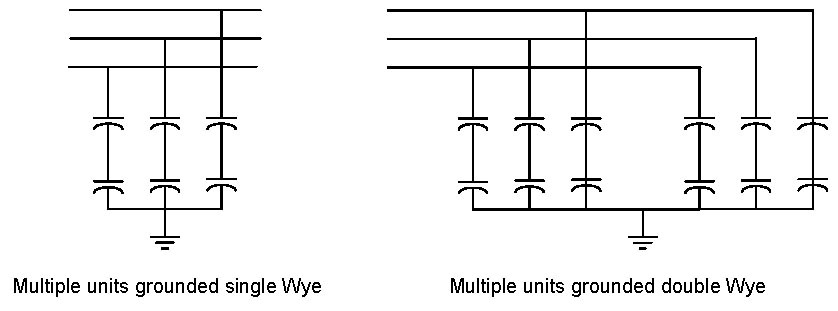 |
2.2. Ungrounded Wye-Connected Banks
Ungrounded wye banks do not permit zero sequence currents, third harmonic currents, or large capacitor discharge currents during system ground faults to flow.
 |
2.3. Delta-connected Banks
Delta-connected banks are generally used only at distributions voltages and are configured with a single series group of capacitors rated at line-to-line voltage.
2.4. H Configuration
Some larger banks use an H configuration in each phase with a current transformer connected between the two legs to compare the current down each leg.
3. Capacitor Mode
The location of the SCB in an electrical network is known as the “compensation mode”
4. Type of Capacitor Bank
4.1.Open Rack up to 420KV
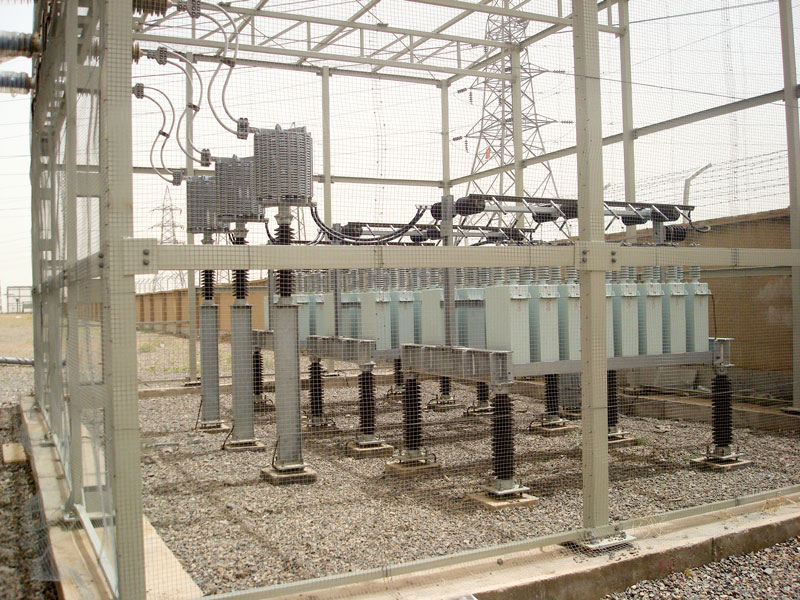 |
|
| 63KV, 2x20 MVAR, Automatic Capacitor Bank | 63KV, 2x20 MVAR, Automatic Capacitor Bank |
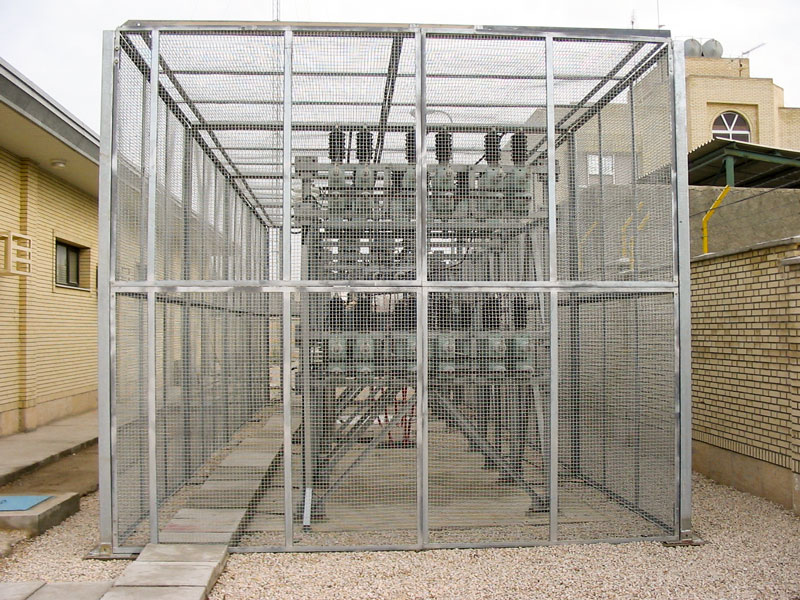 |
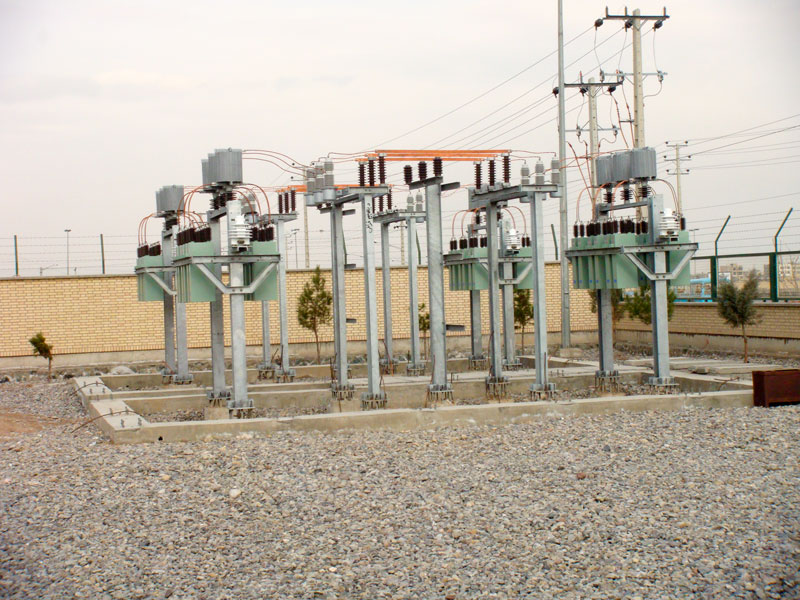 |
| 20KV, 2x(2x2.4) MVAR, Automatic Capacitor Bank | 20KV, 2x(2x4.8) MVAR, Automatic Capacitor Bank |
4.2.Cubicle Type up to 20KV
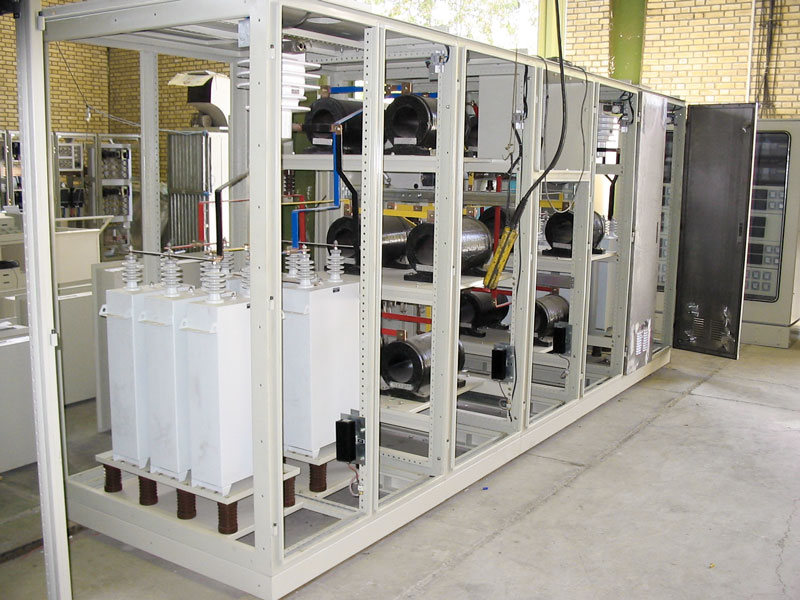 |
|
| 11KV, (2x2.4) MVAR, Automatic Capacitor Bank | 11KV, (2x2.4) MVAR, Automatic Capacitor Bank |

